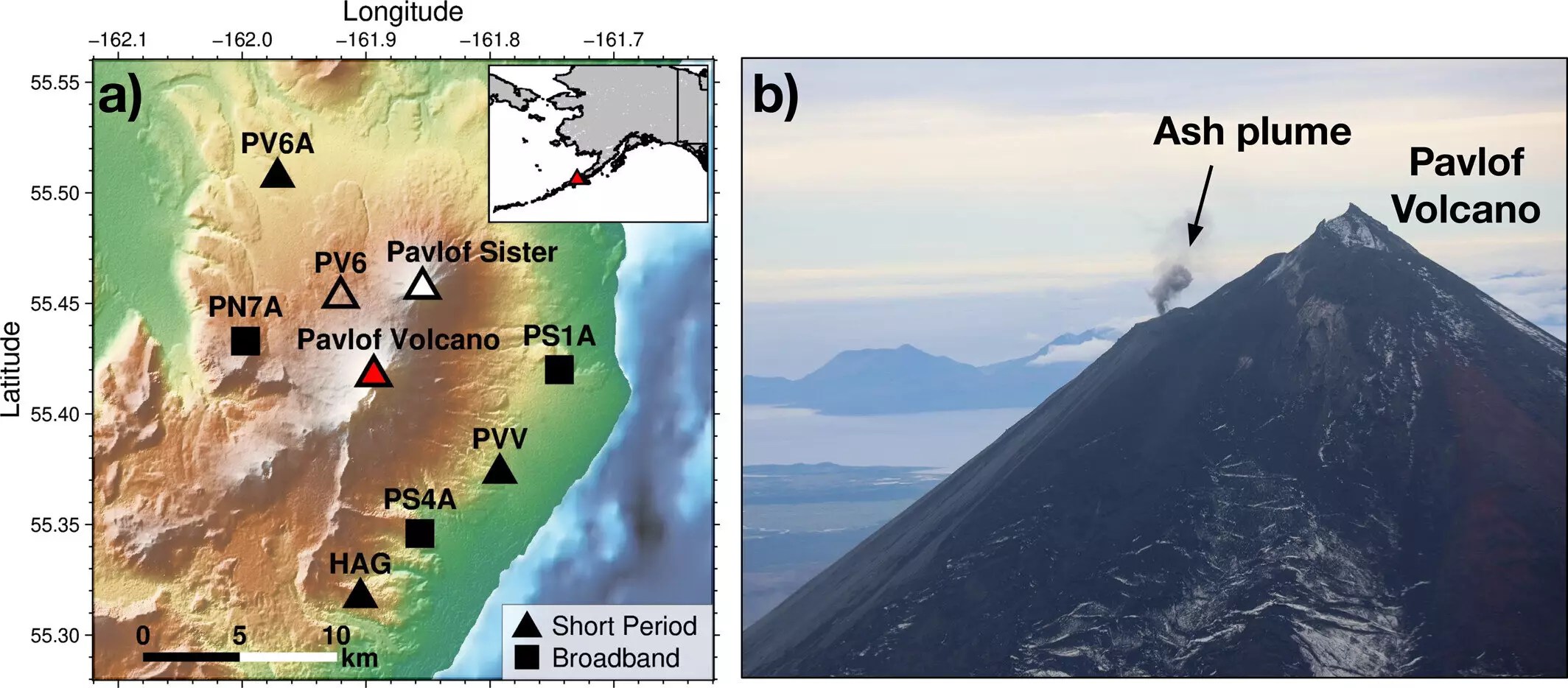Traditional methods of monitoring volcanoes often fall short in both timeliness and efficiency. Graduate student researcher Darren Tan at the University of Alaska Fairbanks Geophysical Institute is spearheading a transformative approach that harnesses the power of machine learning to automate the monitoring and classification of volcanic tremors. This automated system not only captures persistent vibrations but does so with unparalleled speed and accuracy, significantly reducing the hours of manual work required to document such natural phenomena.
Volcanic tremors are crucial to understanding the dynamics of an active volcano, indicating possible underground movements of magma or gas. The capacity to accurately monitor these tremors can provide vital insights into impending eruptions. Conventional monitoring methods used by the Alaska Volcano Observatory (AVO) involve meticulous scanning of spectrograms to detect these subtle yet significant tremors, a process that is prone to human error and fatigue.
Machine Learning: The Game Changer
At the heart of this innovation lies machine learning, a subset of artificial intelligence that enables systems to learn from data, identify patterns, and make informed decisions with minimal human oversight. By developing a comprehensive dataset from the 2021-2022 eruption of Pavlof Volcano, Tan trained computer models that can not only detect volcanic tremor in real-time but also classify it alongside other seismic events and acoustic signals.
Tan’s approach, detailed in the Journal of Geophysical Research: Solid Earth, exemplifies the potential of merging technology with geological science. The system’s ability to categorize various signals—ranging from tremors to explosive eruptions—demonstrates its versatility. This is particularly significant for the Alaskan region, which boasts 54 historically active volcanoes. With 32 of these equipped with seismic monitoring networks, the implementation of Tan’s system could streamline the monitoring process across an expansive and diverse volcanic landscape.
Transforming Volcano Monitoring Protocols
The AVO operates in a high-stakes environment where timely and accurate data is essential for public safety. Currently, duty seismologists manually juggle the responsibility of reviewing spectrograms from multiple volcano-monitoring sites, a task that is both time-consuming and exhaustive. Tan’s automated system promises to alleviate this burden, allowing seismologists to focus their attention on periods or events of heightened significance.
“This innovation essentially reinvents the method of monitoring long-duration eruptions,” Tan affirmed. The ability to flag specific time frames where significant tremors occur ensures that no crucial data escapes the notice of monitoring teams, expanding their capacity to respond swiftly to volcanic activity.
The Future of Geophysical Research
Machine learning is still a nascent field, often likened to the “Wild West” due to its rapid evolution and the broad spectrum of its applications. Tan emphasizes that while the potential is immense, caution is paramount. The integration of automated systems should not undermine the critical interpretative work undertaken by seismologists and researchers. Instead, the technology is designed to enhance human expertise by providing valuable support during high-alert scenarios.
The collaborative effort among the UAF researchers and their counterparts at the U.S. Geological Survey, as seen in this research, highlights the power of interdisciplinary involvement in broadening our understanding of natural hazards. Co-authors of the journal paper include notable names whose combined expertise strengthens the foundation of this pivotal research.
Broader Implications for Volcanology
As volcanoes pose both natural beauty and inherent risks, finding efficient methods of monitoring them is increasingly important. Tan’s work is not merely an academic exercise; it has significant real-world implications. By decreasing the manual labor associated with volcanic monitoring, his automated system enables faster response times to potential eruptions, ultimately contributing to public safety.
Moreover, the implications of machine learning transcend volcano monitoring alone; they could revolutionize various aspects of geophysical research and environmental monitoring. Understanding and harnessing the capabilities of artificial intelligence has the potential to transform how researchers interact with complex datasets and predict geological events.
In a world where the stakes are high and the consequences of inaction can be dire, Darren Tan’s pioneering efforts offer a glimpse into a future where technology and human expertise coalesce to safeguard communities living in the shadow of nature’s power. The implications of this research could very well redefine the boundaries of volcanology and disaster preparedness for generations to come.


Leave a Reply